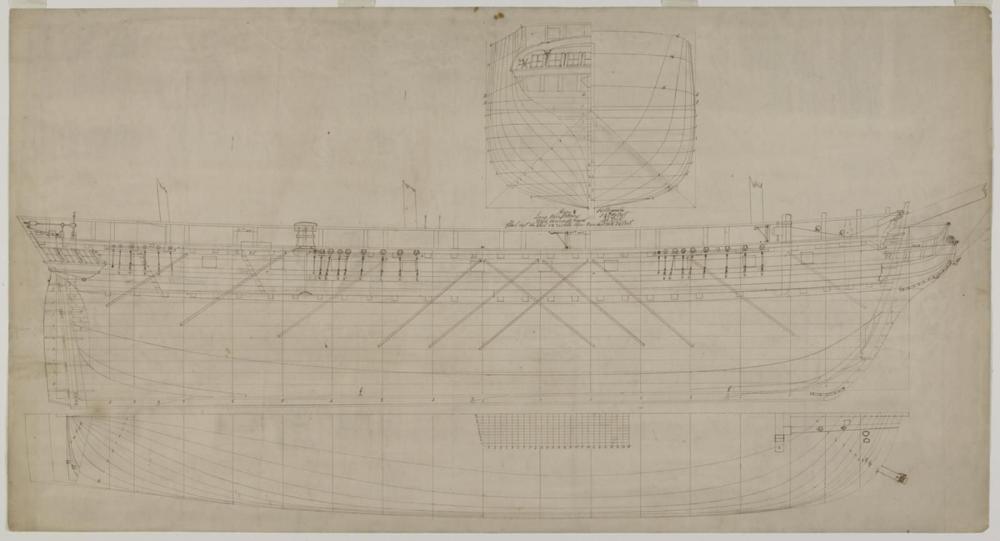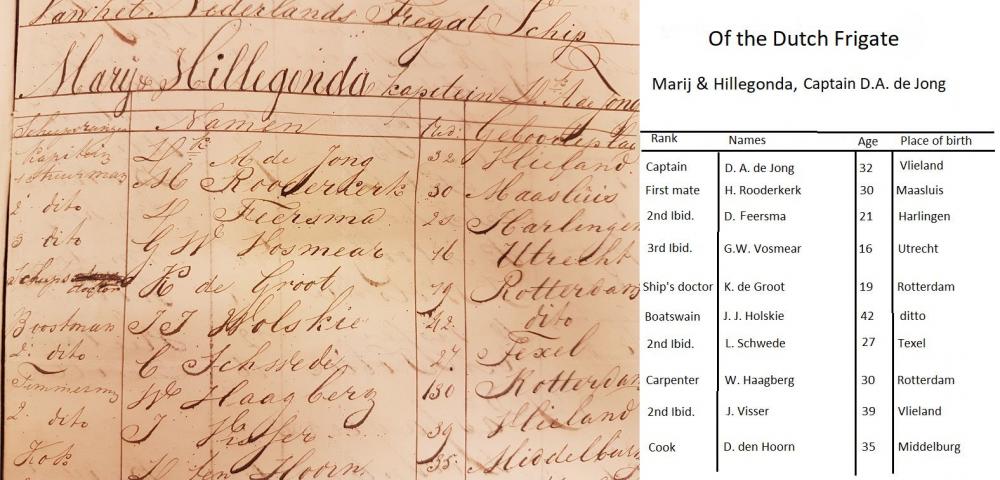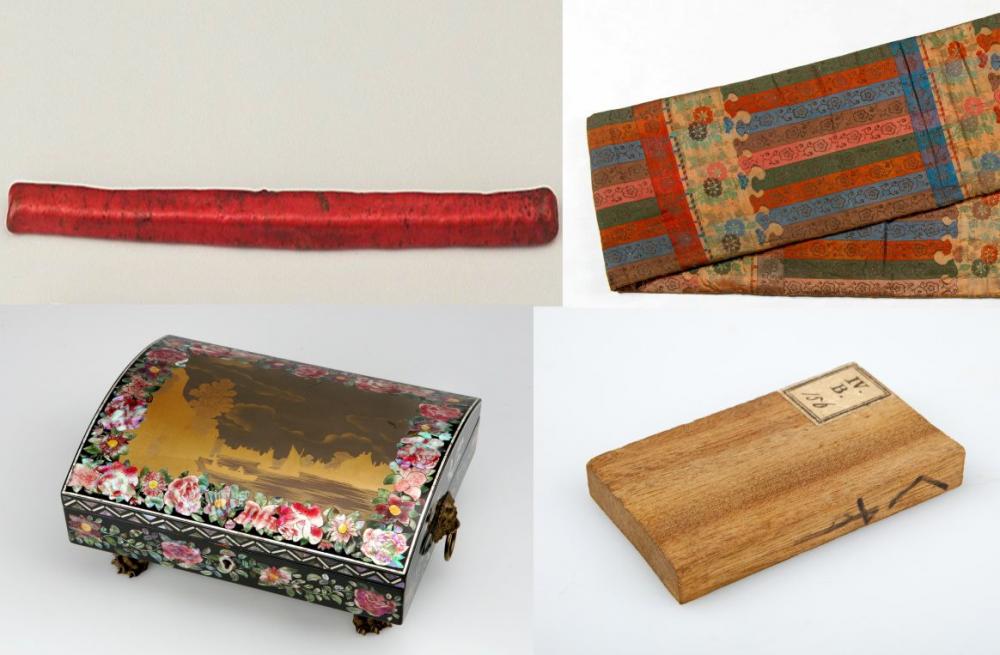
The white letters of her name have rubbed off somewhat, but can still be distinguished in the red pennant flying from the main mast. The ship’s name has been important in dating the painting. It helped in finding out when this ship was in Nagasaki, which was in 1836. It was, in fact, the only year that this ship sailed to Japan. Additionally, the captain’s number 294 on the flag atop the mizzenmast could be matched to the then captain, Dirk Arij de Jong (1802-?).1 With this information, we can conclude that the screen cannot have been painted before 1836. The depiction of the ship must have been rather important to the commissioner, as it is painted with even more finesse than the rest of the already very detailed painting. The history of the Marij & Hillegonda, sometimes written Mary & Hillegonda, is a story in itself. In this blog, we recount her journeys.


